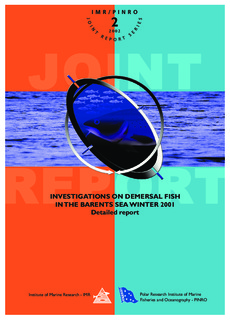| dc.description.abstract | A combined acoustic and bottom trawl survey to obtain indices of abundance and estimates of length and weight at age has been carried out each winter (46 weeks in January- March) since 1981 in the Barents Sea. The target species are cod and haddock, but in recent years abundance indices have also been worked out for the redfish species and Greenland halibut. Since 1993 the survey area has been extended to the north and east in order to obtain a more complete coverage of the younger age groups of cod. In winter 1997 only the Norwegian part of the Barents Sea and a small part of the Svalbard area was covered, while in 1998 also a small part of the Russian EEZ was covered. In 1999 and 2000 the vessels had full access to the Russian EEZ. In 2001 a Russian research vessel covered most of the areas where the Norwegian vessels did not have access, and a sufficient coverage was thus obtained. The main results in 2001 were: - the 1999 year class of cod is very weak and the 2000 year class is indicated to be somewhat below average. The 1998 year class is slightly higher than expected from last years survey; - the abundance indices of 47 year old cod (1997-1994 year classes) are around average, as expected from the last years survey; - the numbers of 8 year and older cod are very low; - length and weight at age and weight increment are improving; - the mortality rate has been reduced compared with the previous years for age group 4 and younger, while it is still high for older age groups; - for haddock all the year classes 1998, 1999 and 2000 are indicated to be at or above average. The 1996 year class is below average, but considerably larger than the year classes 1992-1995, which are very weak; - length and weight at age and weight increment seem to have stabilized in 2001, after a period of increase over the years 1998-2000; - the abundance indices of the redfish species are among the lowest in the time series and there are no signs of improved recruitment; - compared to the 2000-results the abundance indices of Greenland halibut less than 40 cm have decreased, while they have increased for most of the size groups above 40 cm. The survey covers, however, only parts of this species' normal area of distribution. | en |
